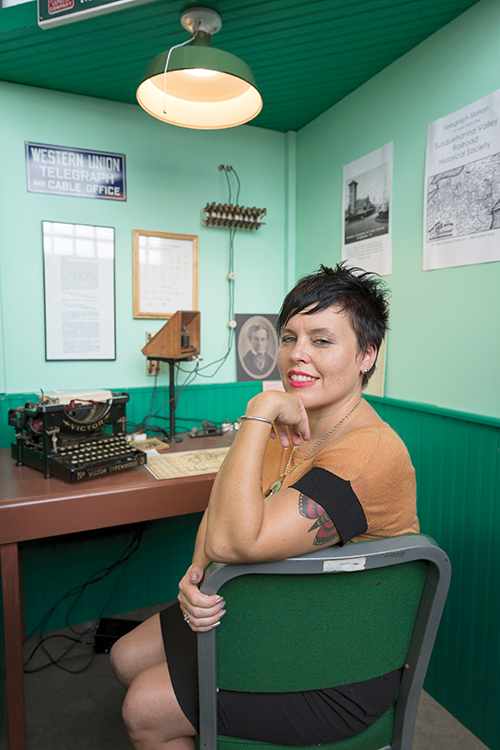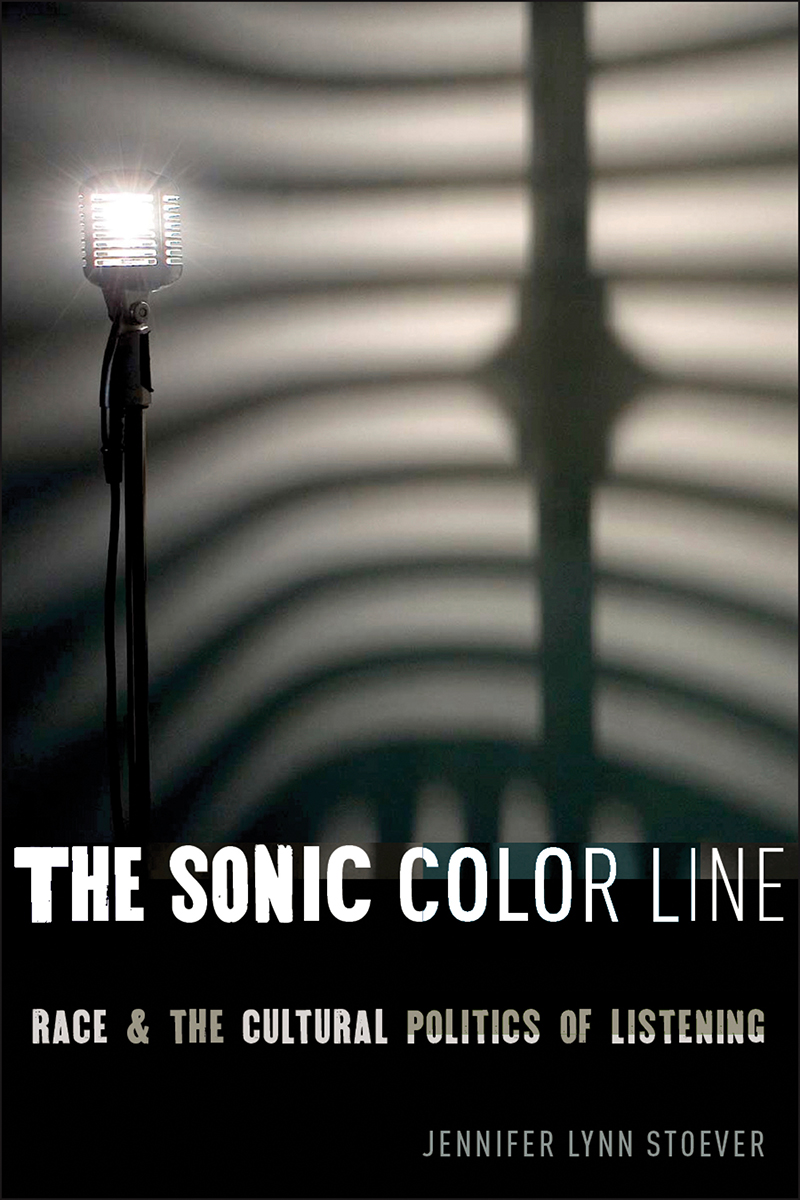A demand to be heard
Sound studies reveal much about race, politics

When Tyisha Miller, a 19-year-old African-American woman, was shot dead by police in southern California in 1998, the incident gained national attention over allegations that the killing was racially motivated. But for Jennifer Stoever, the incident was personal. Miller was her former student, and her death further cemented Stoever’s drive to take on social justice issues through research.
“I was already on this trajectory and having these questions, but that was a world-altering event for me,” says Stoever, assistant professor of English. “This made me deeply think about racism — how it’s an attitude. It’s a way of seeing, of hearing, of being in the world.”
Of hearing? You read that right. Stoever takes an unconventional approach to social justice research: Her work revolves around the social, cultural and political aspects of sound and listening. Sound is not a subject commonly brought up when discussing racism and social strife, but Stoever thinks it’s crucial. According to her, we don’t take in sound without interpreting it; listening is a subjective experience.
“Listening seems so passive and natural. It’s easy to assume that everybody listens the same way that you do and everybody hears sounds the same way,” Stoever says. “Everyone’s listening differently, sometimes radically differently. We all might be at a concert together taking in the same sounds, but we can take away really different feelings, judgments and interpretations.”
Stoever addresses these issues in her new book, The Sonic Color Line: Race and the Cultural Politics of Listening (NYU Press, 2016). The Sonic Color Line is a history of how sound and listening have become racialized in the United States and, at the same time, how we as Americans understand ourselves in terms of race in regard to sound and listening. The book starts during the antebellum period, 10 to 15 years before the Civil War, and shows how sound and listening have allowed racism to proliferate over time. It stops at 1945, when the beginning of the theory of colorblindness begins to take shape.
“That shift toward, ‘We don’t see race anymore. We’re all Americans’ — it suppressed conversation about the visual idea of race. We’re supposed to overlook it. If you talk about race, then you’re the one who sees race. But this idea that people are supposed to sound a certain way — that you’re supposed to listen to certain music, what voices should sound like — we use sound to stand in for race.”
Stoever wrote her book to show how racial discrimination happens through sound and listening, calling it “the sonic color line.”
“This gives us a way to start the conversation and start recognizing how these patterns of listening influenced by racial stereotypes impact our daily lives, so we can figure out how to dismantle them,” Stoever says.
Inspired by music
Stoever is a longtime music lover — she got a turntable and started a record collection when she was just 5 years old.
Growing up in California in the 1980s, Stoever lived through what she saw as “intense inequity.” During her teen years, she spent a lot of time in the local ska-punk scene, where fans and bands often addressed racial and social justice. Stoever graduated from high school in 1992, in the wake of the Los Angeles Rodney King riots.
“Music was an escape. All of this negativity and tragedy in the world around me could become something that was utopic, kind of the place where people come together to imagine other forms of existence,” she says.
When Stoever got out of college, she took a job teaching high school English, and Miller was in her very first class. It was during this time that she started questioning why some students were tracked as advanced, while others were not, why some were labeled as problems and others as compliant.
“What do race and class have to do with a teacher’s idea of what a good student is? How are they forced to perform as a good student?” Stoever says. “That idea of a good student has a sound. It’s this quiet, obedient, middle-class white way of being. What do students have to lose when they’re compelled to perform the role of quiet, obedient student? It’s not just their accent. It’s their enthusiasm, their sense of humor, their agency, their connection with their family, sense of self-esteem. And what knowledge do we lose when we start boxing people in this way?”
To approach this and other issues from a novel perspective, she started her research into sound studies. Her blog, Sounding Out!, has become a go-to resource on the topic.
“I wanted to, in some way, contribute my knowledge to what I think is the most important collaborative project of our time, which is social justice and human rights,” Stoever says.
Learning to listen
When Stoever launched a course on sound studies at the University, she originally titled it Intro to Sound Studies. When hardly anyone registered, she changed it to How We Listen, and the class filled immediately.
“Sound studies is not really the study of sound; it’s the study of how we listen, not just biologically, but without discounting the physical nature of it. But where does the physical meet the cultural, historical and psychological?” Stoever asks.
Students in the class have helped Stoever further develop the Binghamton Historical Soundwalk Project, a civic engagement project that uses sound studies to help make disparate groups in Binghamton aware of the sonic space they share and how their own listening practices affect one another.
The Binghamton Historical Soundwalk utilizes the concept of a soundwalk (any walk or excursion where the sounds around you are the focus) in combination with oral histories and other historical data to encourage participants’ engagement with their environment and put their aural experiences in a historical context.
Daniel Santos ’16 and fellow students pursued this particular project because they noticed a misunderstanding among yearlong residents and students, many of whom live in Binghamton temporarily.
“From personal experience, we found that both students and residents held many false and hurtful assumptions about each other, which were the result of a lack of communication between both groups,” Santos says. “We believed that many students were detached from the local area, although most students live off campus. Contributing to this detachment was a lack of knowledge about the local history of the Triple Cities. Most students saw the poverty in the area, but were unaware of what caused the city’s economic decline or its prosperous past, and as a result, decide to study in isolation from the local community and its residents.”
Stoever loves the sonic opportunities that downtown Binghamton provides. “It is literally a sound laboratory for me to test my ideas. We don’t often think about humanities research in that way,” she says. This academic year, she will call on students to collect sounds from local residents in order to better represent their perspectives.
With her blog, her new book and the ongoing Soundwalk project, which she documents on her Sounding Out! blog, Stoever hopes to not only educate her students and the people of Binghamton but also to contribute to the national discussion around race and social strife in America.
“I want my work to contribute toward decolonizing listening, and for people to understand the moment that we’re in historically and work to change that so people can feel more free and stay alive. That’s why I am doing the deep research and creating knowledge.”


